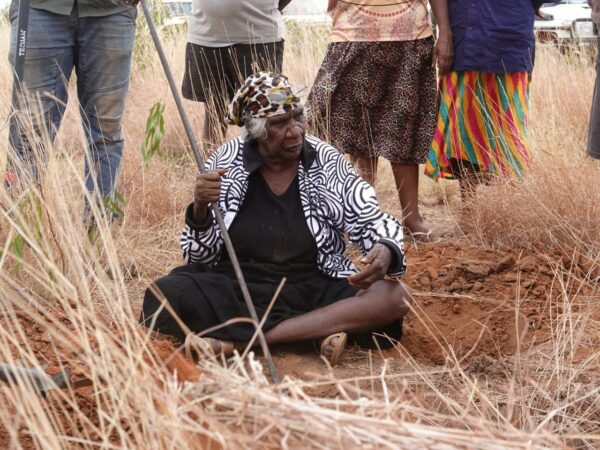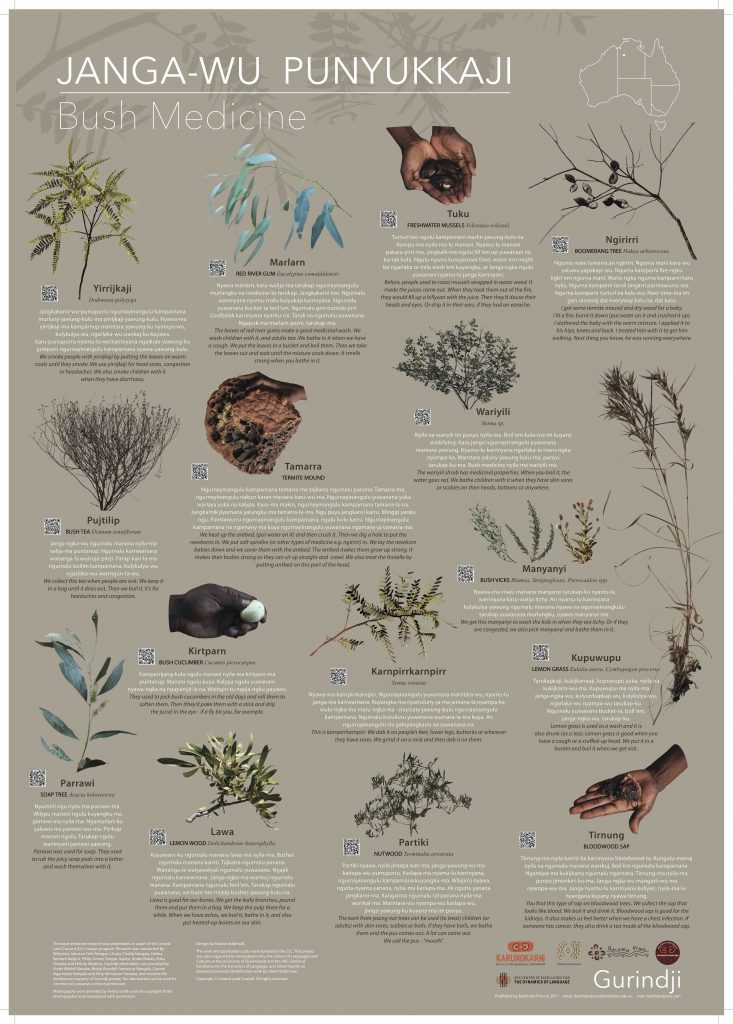Indigenous Ecological Knowledge

For tens of thousands of years Aboriginal people’s intimate knowledge of their country, their relationships with and responsibilities to it, has allowed them to survive and thrive on the driest continent on earth.
Indigenous ecological knowledge, complex, localised and adaptable bodies of knowledge and practices, is highly valued and passed from generation to generation of Aboriginal people in the CLC region.
We support the maintenance and transmission of this knowledge because it is central to the lives and livelihoods of our constituents and helps them to manage precious and threatened natural resources in the national interest.
We do this by producing teaching and information resources about native animals, plants, bush foods and medicines in local languages and facilitating excursions (country visits) with schools and families.
Reading the country
The reading the country project was started in 2020 to increase the pool of Aboriginal master trackers (kuyu pungu) and to incorporate their knowledge and the project’s learnings in land management activities.
The project draws on the knowledge of senior people to create resources and a learning environment for younger land managers so they can master and use ancient traditional tracking knowledge. While participants have been mostly Warlpiri and Pintupi speakers, it is relevant for land managers across Australia’s deserts.
An extensive Yitaki Maninjaku Ngurungka (Reading the Country) training framework has been created as one of the resources. Another is an online Desert Animal Track and Sign Quiz
Knowledge holders from the Northern Tanami Indigenous Protected Area are using video to present some of their ecological knowledge in Warlpiri.
In Warra-warra kanjaku ngurra: Ngapa manu Warlu Myra Herbert and others explain the seasonal change brought by ngapa (rain/water) and how our North Tanami Rangers look after water sites in the IPA.
In Warra-warra kanjaku ngurra: Kuyu manu Watiya they share their knowledge of kuyu (animals), their behaviour and tracks, as well as information about the seasons.
Training resources
Our Murnkurrumurrnkurru Rangers in Daguragu worked with elders, academics and the local arts centre to produce a series of Gunrindji language posters about yawu (fish), jurlaka (birds), kajangarna jaartkarrawaji (bush foods) and janga-wu punyukkaji (medicines).
Smart phone users can scan QR codes next to the images to hear information about these plants and animals, presented in Gurindji by Violet Wadrill Nanaku.
The posters can be purchased from the Karungkari Art Centre in Kalkaringi and are used in schools.
The rangers assist with the transmission of this knowledge by supporting school excursions where students can learn more about the plants and animals from knowledge holders on country.
Our Kaltukatjara and Tjakura ranger groups, along with other CLC staff and Nyangatjatjara College teachers, run the Learning On Country program on the Katiti Petermann IPA that surrounds the Uluru—Kata Tjuta National Park.
The program works with primary and secondary schools in Mutitjulu, Kaltukatjara (Docker River) and Imanpa and community organisations to organise an annual schedule of excursions to sites in the IPA with senior Anangu knowledge holders.
The excursions expose the students to ‘traditional’ and ‘Western’ land management practices and philosophies and our staff supplement them with trips that allow Anangu families to visit remote sites.
The families use these highly valued trips to burn country, clean water holes and teach their children. They have described them as “walking in the footsteps of our ancestors”.



